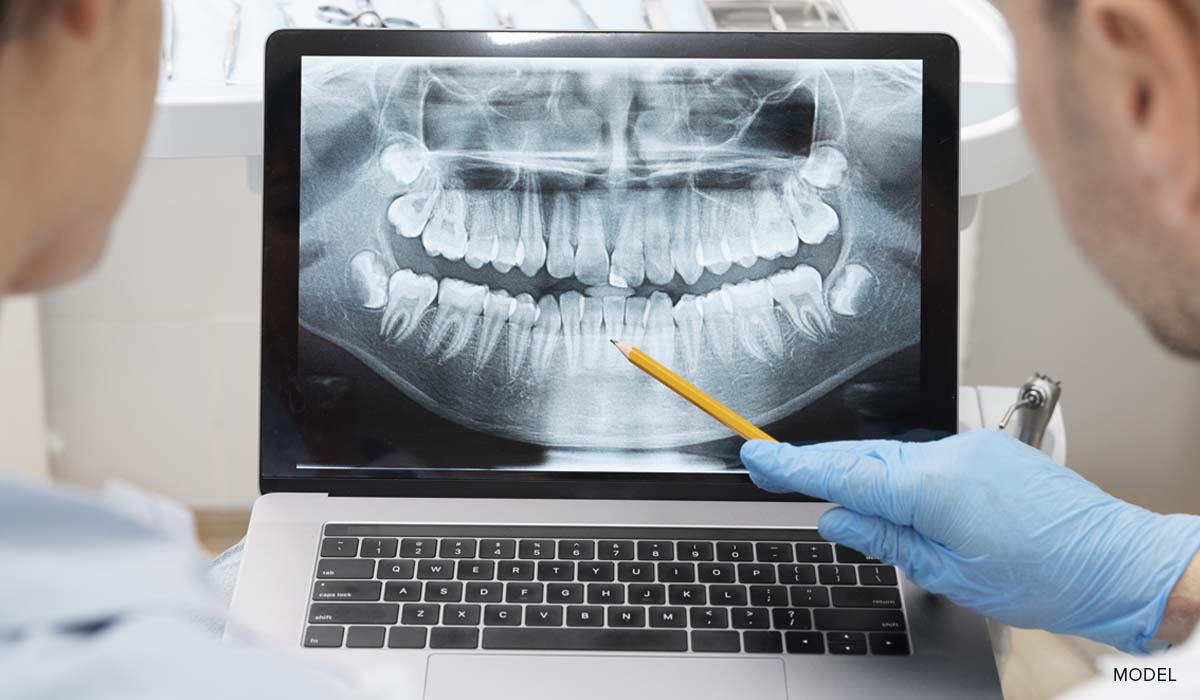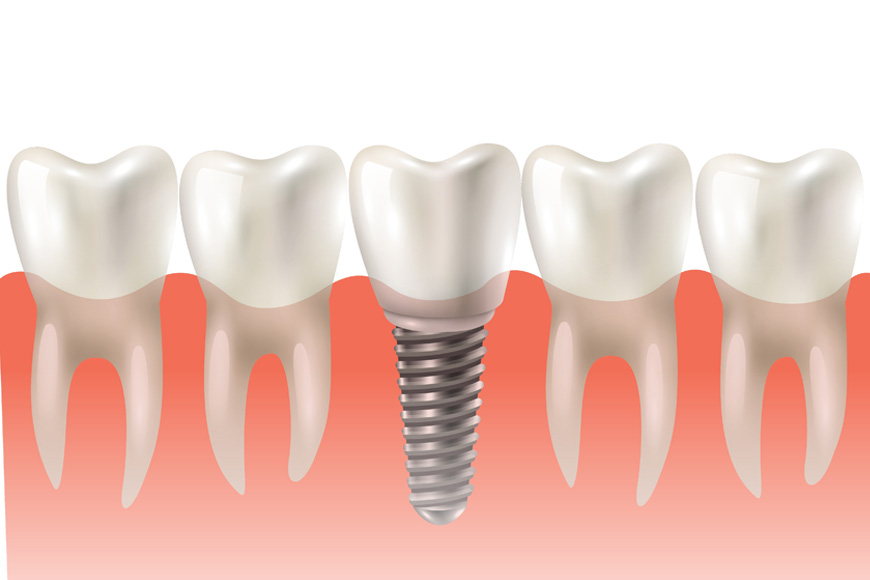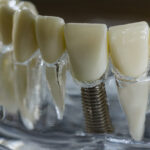If you are missing one or more teeth, dental implants are an excellent option to restore your smile and oral health. Dental implants are a long-term solution that provides a foundation for replacement teeth that look, feel, and function like natural teeth. They are designed to withstand the forces of biting and chewing, providing a permanent and stable solution for missing teeth.
Weighing the Pros and Cons: Types of Dental Implants
There are several types of dental implants available, each tailored to meet specific needs. In this article, we will explore the different types of dental implants and their advantages and disadvantages:
Endosteal Implants
Endosteal implants are the most commonly used type of dental implant. They are placed directly into the jawbone and are made of titanium, a biocompatible material that integrates with the bone. Endosteal implants are shaped like small screws or cylinders and act as a foundation for artificial teeth, such as crowns, bridges, or dentures.
- High success rate
- Secure and stable foundation for replacement teeth
- Minimal maintenance required
- Long-lasting solution
- Preserves bone health
- Invasive surgery
- Requires adequate bone density
- Longer treatment time
Subperiosteal Implants
Subperiosteal implants are an alternative to traditional endosteal implants. These implants are placed on or above the jawbone, but below the gum tissue. They consist of a metal frame with attachments that protrude through the gums, providing support for artificial teeth.
- Suitable for patients with insufficient bone height or density
- Minimally invasive procedure
- Shorter treatment time
- Limited bone stimulation and support
Zygomatic Implants
Zygomatic implants are an advanced dental implant solution for patients with severe bone loss in the upper jaw. Unlike traditional implants that are anchored in the jawbone, zygomatic implants are anchored in the cheekbone (zygoma).
- Suitable for patients with significant bone loss in the upper jaw
- Avoids the need for bone grafting
- Provides immediate tooth placement and restoration
- Complex procedure
- Possible sinus-related issues
All-On-4 Implants
All-On-4 implants are an innovative solution for patients with multiple missing teeth or complete edentulism. This technique uses four strategically placed implants to support a full arch dental bridge. All-On-4 implants provide stability, comfort, and improved chewing function.
- Fewer implants compared to traditional full arch dental implants
- Reduced overall treatment time
- Immediate placement of a temporary prosthesis
- Cost-effective solution for full mouth restoration
- Limited implant support
- Not suitable for everyone
Implant-Supported Bridge
An implant-supported bridge is a fixed dental prosthesis that replaces multiple missing teeth. This type of bridge is supported by dental implants, eliminating the need for adjacent healthy teeth to act as anchors. Implant-supported bridges provide excellent stability, functionality, and aesthetics.
- Preserves adjacent healthy teeth
- Restores chewing function
- Long-lasting and durable solution
- Prevents bone loss
- Requires healthy adjacent teeth
- Increased cost
Implant-Retained Denture
An implant-retained denture is a permanent denture that is supported by dental implants. It offers a secure and stable fit, eliminating the need for messy adhesives. Implant-retained dentures provide improved speech, enhanced chewing ability, and a natural-looking smile.
- Increased stability compared to traditional dentures
- Improved oral health and hygiene
- Restores facial appearance and confidence
- No slipping or movement during everyday activities
- Surgical procedure
- Potential complications
- Higher cost
Complementary Procedures for Dental Implants
In addition to the various types of dental implants mentioned above, there are several other techniques that may be involved in the dental implant process, depending on the individual’s oral health condition and specific needs. These techniques are aimed at ensuring the success of the dental implant procedure and providing a stable foundation for the replacement teeth.

-
Bone Grafting
Bone grafting is a procedure that involves adding bone or bone-like materials to the jawbone to augment its volume and density. It is often recommended for patients who have experienced bone loss in the jaw due to tooth extraction, gum disease, or other factors. Sufficient bone volume and density are essential for the successful placement of dental implants. Bone grafting helps create a strong and supportive base for the implants, increasing the chances of long-term success.
-
Sinus Lift
A sinus lift, also known as a sinus augmentation, is a surgical procedure performed in the upper jaw when there is insufficient bone height to accommodate dental implants. During this procedure, the sinus membrane is lifted, and bone graft material is placed in the space between the jaw and the sinus floor. The additional bone material stimulates new bone growth, providing adequate support for the dental implants in the posterior upper jaw.
-
Ridge Augmentation
Ridge augmentation is a technique used to correct deformities in the jawbone’s shape or size caused by tooth loss, trauma, or developmental issues. The procedure involves adding bone graft material to the jaw ridge to build it up and create a more solid foundation for dental implants.
-
Socket Preservation
Socket preservation, also known as alveolar ridge preservation, is a technique used to maintain the bone volume and shape after a tooth extraction. After the extraction, a bone graft material is placed in the empty socket to preserve the bone and prevent excessive bone loss. This sets the stage for future dental implant placement, as the preserved bone can facilitate better implant integration.
-
Computer-Guided Implant Surgery
Computer-guided implant surgery utilizes advanced imaging technology, such as Cone Beam Computed Tomography (CBCT), to create a precise three-dimensional image of the patient’s jaw and surrounding structures. The dentist uses this information to plan the optimal placement of dental implants, ensuring accuracy and reducing the risk of complications during the surgery.
Starting Your Journey to a Radiant Smile
Dental implants are an exceptional and remarkably effective solution for tooth loss, offering versatility and lasting benefits. Your dentist will conduct a thorough assessment, considering factors such as bone health, the extent of tooth loss, and your personal preferences, to recommend the most suitable type of implant for you. With proper care and maintenance, dental implants can grant you a permanent and naturally beautiful restoration, revitalizing your smile and significantly enhancing your quality of life.
If you’re considering dental implants, take the next step towards achieving a healthy and beautiful smile. Schedule a consultation with Madison Dentistry LLC today or call 973-822-8003 to explore your dental implant options. Our experienced dental implant experts will guide you through the process, addressing any questions or concerns you may have. Your dream smile awaits!




